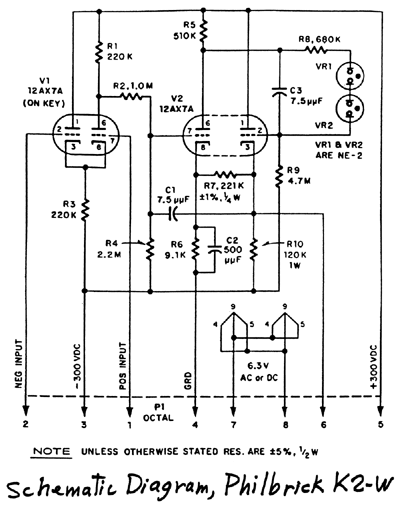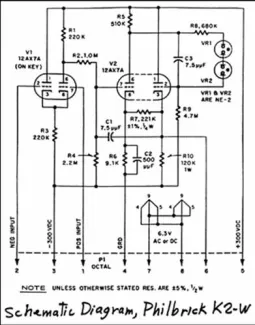On one of my Saturday-morning visits to Helmut Singer in Aachen, Germany I spotted a small box behind the counter that immediately got my attention. I had heard before about the legendary tube-based opamps designed by George Philbrick in the 50-ies. I had never seen one, and this was my chance to get one. Herr Singer graciously parted with it for a quite reasonable fee - about the same as the original amount in dollars from 50 years ago. I felt like a kid that had just cleaned out the candy store.
I discovered that there is quite a lot of interest on the Internet for these items; there is a complete Philbrick Archive. A lot of historic information, schematics, version differences, specs etc can be found, for example here.
These are real opamps, in the sense that they have a topology almost identical to most opamps (and audio amps as well). Like most opamps, they run on bipolar supplies and have a very high gain, allowing the application to tailor the closed loop response through the feedback network.


If you look at the schematic of the (related) K2-W, the opamp topology is clearly seen. V1 forms a differential in input stage which is identical to most opamp input stages, with undegenerated cathode connection. The amplified signal is taken off single-ended from R1 and coupled to a single high-gain stage (we audio guys would call that the Vas stage). Finally there is the output buffer stage, cathode follower V2b. The miller compensation with C1, from the output to the Vas input, is also interesting. Many designers would put C1 between the Vas output (R5) and the input, but here it is from amp output to Vas input. The reasoning is that the low impedance output connection can charge/discharge C1 much quicker than the Vas output could, and that this improves amp slew rate. In this day and age we would call that 'output inclusive compensation'. These guys already knew this and did it in the 50-ies!
